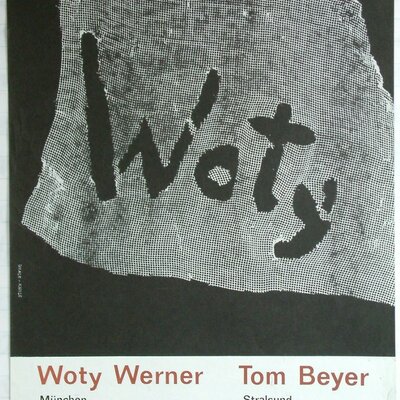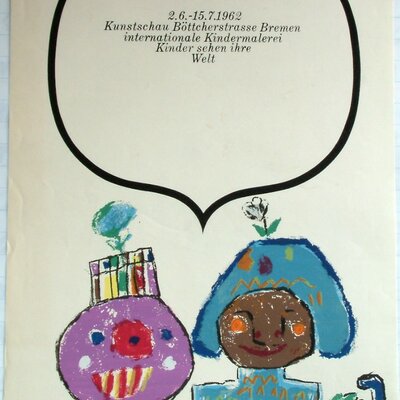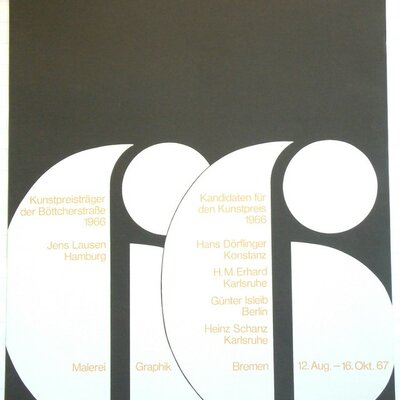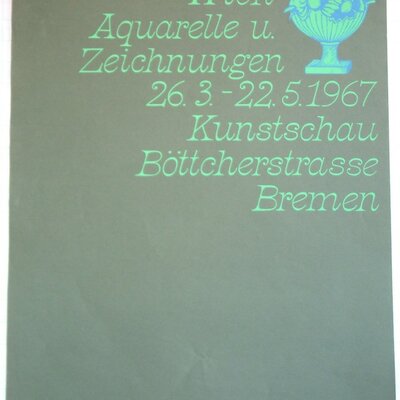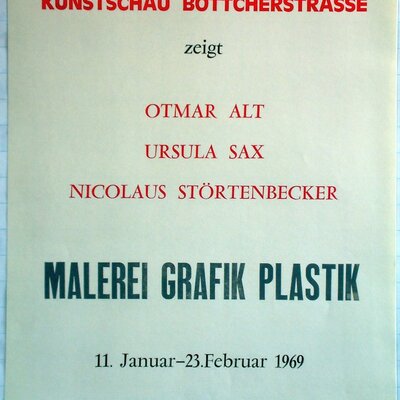Roselius referred to the adverts as “propaganda”, revealing their strategic importance, but also the deliberate conceptual design that lay behind the advertising. Whilst original executive architects Alfred Runge and Eduard Scotland were responsible for all areas of design – from the door handles to the advertising artwork – when construction work commenced, as Kaffee HAG successfully evolved as an international brand, greater emphasis was placed on the topicality and quality of the posters as advertising media, with renowned European poster artists and graphic designers such as Ludwig Hohlwein and Lucian Bernhard being commissioned to produce them. Their reputation ran parallel to that of the HAG coffee brand for a time.
A second collection in the archive contains the posters of the sales exhibitions of contemporary art held after the end of World War II, mainly in the Werkschau shop and later in the Paula Modersohn-Becker House, which have remained an important element of the cultural image of Böttcherstrasse right up to the present day The Haase & Knels studio in Bremen began designing the posters in 1961. They provide a contemporary impression not only of the fine arts of the period but also of the advertising artwork of the time.
















